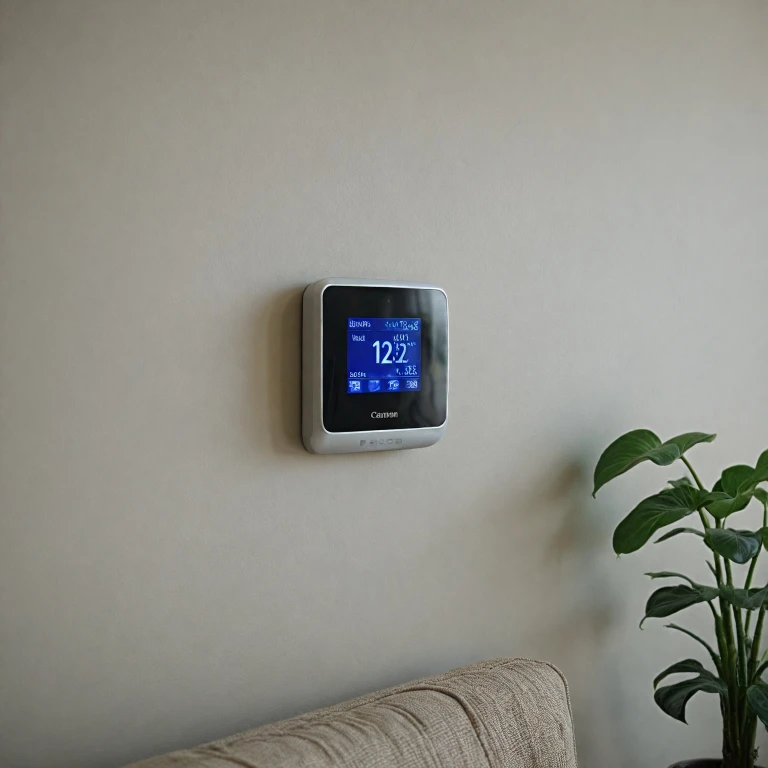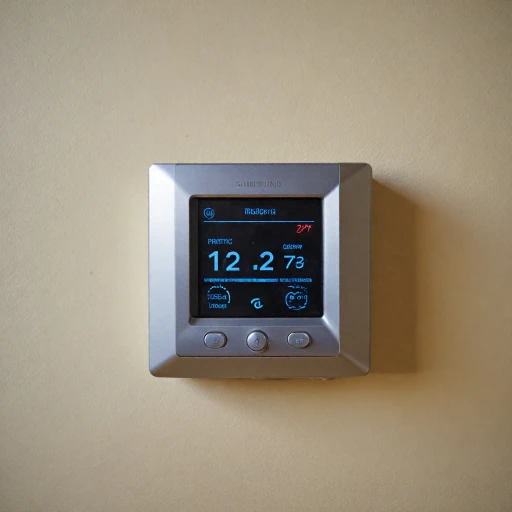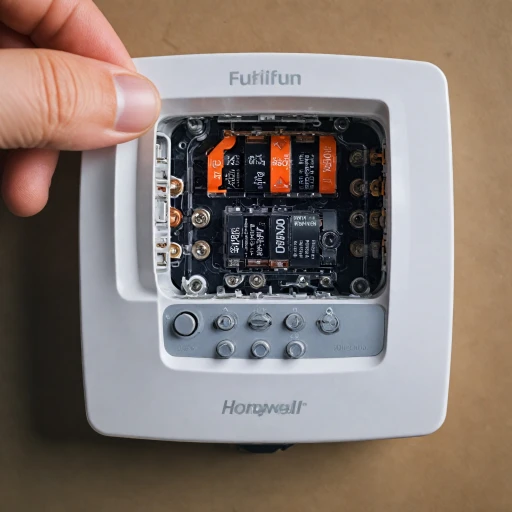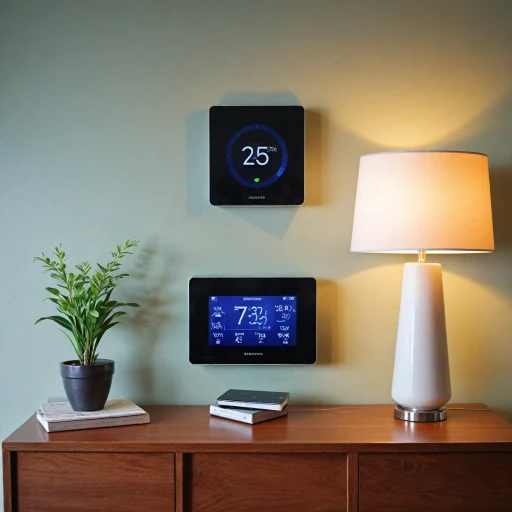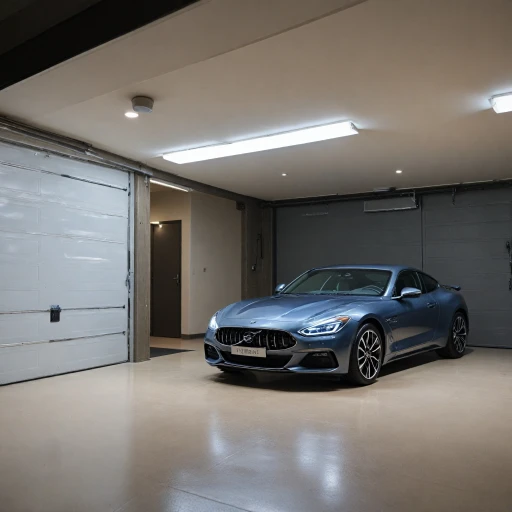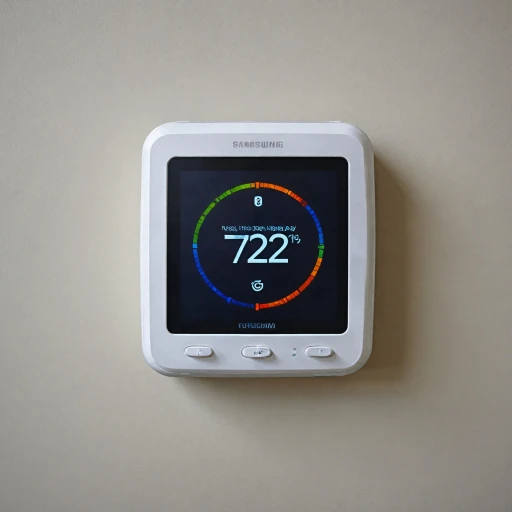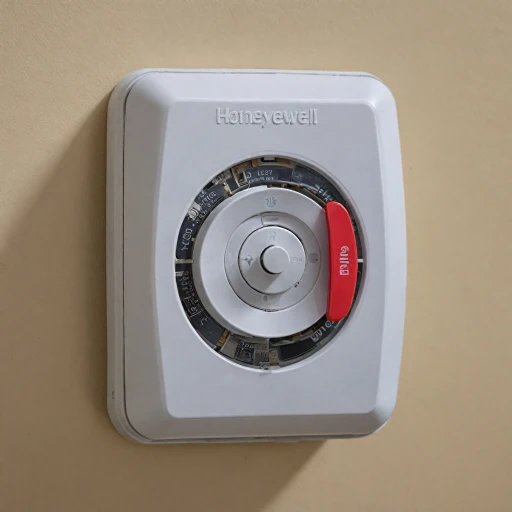
Understanding Smart Thermostats
Getting to Grips with Smart Thermostats
Smart thermostats have become a staple of modern homes, offering a convenient way to manage the temperature within your living spaces efficiently. Unlike traditional thermostats, these devices connect to your Wi-Fi network, enabling features such as remote control via your smartphone, integration with smart home devices, and energy-saving settings tailored to your preferences. The technological advancements in smart thermostats are specifically designed to simplify your home heating and cooling systems. Whether you're using a nest thermostat or a Honeywell thermostat, these devices collect data over time to learn your patterns and adjust accordingly to ensure comfort, which can significantly improve the efficiency of your HVAC system. Notably, most smart thermostats have a dynamic display that provides real-time information about your temperature settings and system status. However, understanding the power requirements of a smart thermostat is crucial because they often require batteries, or in some cases, a continuous power source, to function without interruption. A common concern among smart thermostat users relates to battery life, which can be affected by factors like low temperatures and the frequency of system use. To maintain your thermostat’s efficient operation, it’s important to be aware of when you might need to replace batteries. Many thermostats have a small battery compartment accessible for changing batteries, typically housing AAA alkaline batteries or similar, which tend to need replacement less frequently than other types. Knowing when your thermostat battery is low and understanding how to manage energy needs is also crucial to keeping your system running smoothly. If you're keen to learn more about how smart thermostats manage power, you can explore further to determine whether your thermostat demands a specific type of battery or if an alternative power source is more suitable. For an in-depth understanding of how smart thermostats manage their power needs, you can visit the blog on understanding your smart thermostat's power requirements, where more detailed insights are available.Power Sources for Smart Thermostats
Exploring Power Options for Smart Thermostats
When it comes to powering smart thermostats, understanding your options is crucial to ensure they operate seamlessly in managing your heating and cooling systems. Smart thermostats typically derive their power in one of two primary ways: through batteries or by drawing power directly from your HVAC system. Smart thermostats that rely on batteries offer a certain level of flexibility. They do not depend on hard wiring which can be especially useful if you’re setting up a wall-mounted nest thermostat such as a Honeywell thermostat where direct wiring proves challenging. These battery-powered thermostats usually require AAA alkaline batteries. It's important to know when it's necessary to change these batteries. Often, a thermostat display will indicate a low battery warning, signaling the need to replace batteries. A dedicated battery compartment makes changing batteries straightforward once you've noted the low battery indicator. On the other side, some systems are hardwired into the HVAC system for a constant power supply. This option eliminates the need to frequent battery replacements, offering users the convenience of not having to worry about low battery signals. Nevertheless, it typically requires professional installation ensuring the system is connected safely and correctly. In practice, many thermostats have been designed to accommodate both methods. Understanding the power source requirements for your specific model — whether it's a nest thermostat, Honeywell, or any other — is essential. For those opting for battery-support, we recommend following a step-by-step guide to replacing the batteries efficiently. This guide can help ensure you navigate the changing process with ease and precision. Selecting the right power source for your smart thermostat not only impacts ease of use but could also affect other factors such as the reliability of your HVAC system’s performance and overall energy management within your home. Keep a close eye on your thermostat’s performance and readiness to address any issues that arise with its power source will help in maintaining comfort and energy efficiency.Battery-Powered Thermostats: Pros and Cons
Weighing the Benefits and Drawbacks of Battery-Operated Thermostats
Battery-powered thermostats offer a unique alternative to hardwired options, gaining popularity among homeowners for their simplicity and versatility. However, they come with their own set of pros and cons. Advantages of Battery-Powered Thermostats:- Ease of Installation: Unlike hardwired models, battery-powered thermostats can be easily installed without the need to connect wires from your HVAC system. This can be an appealing option for those who prefer a quick and straightforward setup.
- Portability: These thermostats are often wall mounted and can be relocated without extensive hassle. This makes them ideal for homes where changes in heating cooling requirements are frequent or unpredictable.
- Uninterrupted Power During Outages: A significant advantage is their independence from your home's power grid, ensuring that your Nest or Honeywell thermostat continues to control the temperature even during a blackout.
- Regular Maintenance: You will need to keep an eye on the thermostat battery level. Low battery warnings, like a dim Thermostat display or error alerts, may require you to have spare batteries on hand.
- Long-Term Costs: Although they eliminate some upfront costs associated with wiring, the need to frequently replace batteries like AAA alkaline can add up over time. Remember, battery compartments can vary between models, potentially requiring different types of batteries.
- Potential Incompatibility: Not all thermostats with battery compartments work with all systems. Ensure compatibility with your specific HVAC system before opting for a battery-operated model.
Hardwired Thermostats: Pros and Cons
Weighing the Benefits and Drawbacks of Hardwired Thermostats
When considering a thermostat for your home, it's essential to evaluate the benefits and drawbacks of hardwired systems. These units are directly connected to your HVAC system, drawing power from it without relying on batteries. This infrastructure provides uninterrupted operation without the need to change or replace thermostat batteries.
Hardwired thermostats offer several compelling advantages:
- Consistent Power Supply: Unlike battery-powered thermostats, hardwired options don't suffer from low battery issues, providing a reliable temperature control experience.
- Low Maintenance: Because these thermostats are connected to the HVAC system, changing and checking batteries isn’t necessary, reducing long-term maintenance tasks.
- Aesthetically Pleasing: With no battery compartment to contend with, these units typically have a sleeker design without the bulk of additional battery housing.
However, they are not without certain limitations:
- Installation Complexity: With hardwired thermostats, installation requires professional help since it involves connecting wires to your HVAC system. DIY installation may not be feasible for most homeowners.
- Initial Cost: These systems can be more expensive upfront compared to battery-powered thermostat models.
- Power Outages: In case of a power failure, while your HVAC system is not operational, your thermostat will lose its operational capacity until power is restored.
The Nest Thermostat is a popular example of a hardwired hvac thermostat that offers smart features without the concern of changing batteries. Such choices provide seamless integration with your heating and cooling needs while enhancing the efficiency of your home system.
Understanding these factors can guide you in determining whether a hardwired or battery-powered thermostat aligns with your lifestyle and heating/cooling preferences. With the proper selection, you ensure optimal comfort and energy management in your living space.
Choosing the Right Thermostat for Your Home
Finding the Best Thermostat for Your Residence
When selecting a thermostat, it's crucial to assess your home's specific requirements and your personal preferences. Here are some factors to consider:- Compatibility with Your HVAC System: Ensure that the thermostat you choose is compatible with your existing HVAC system, whether it's for heating, cooling, or both. Some models like the Nest thermostat are versatile and work with a wide range of systems, including advanced multi-stage systems.
- Power Source Preferences: Decide if you prefer a battery-powered thermostat or a hardwired one. Battery-powered thermostats offer flexibility in installation as they are wall mounted, but you'll have to change batteries periodically to ensure the thermostat display remains operational. On the other hand, hardwired thermostats draw power directly from the HVAC system but require more comprehensive installation.
- Ease of Use and Features: Consider what features are most important to you. Some thermostats, like the Honeywell thermostat, offer simple interfaces while others provide advanced capabilities such as remote access via smartphone apps, programmable settings, and even presence sensors which adjust temperature based on detected occupancy.
- Thermostat Maintenance: Think about the effort you're willing to invest in maintaining your thermostat. Thermostats that rely on batteries will need regular checks and possibly replacing batteries when the low battery indicator appears. It's ideal to have extra AAA alkaline batteries on hand for models that require them.
- Display and Design: Look at the display clarity and the overall design. A clear display is essential for easy reading of the current temperature settings and operational mode. Some thermostats are designed to blend seamlessly with your home décor, while others may offer customizable faceplates.
Troubleshooting Common Issues
Troubleshooting Your Smart Thermostat
Dealing with smart thermostat issues can be frustrating, but understanding common problems can help you quickly address them. Here are some steps you can take to troubleshoot your thermostat:- Check the Power Source: Ensure that your thermostat is receiving power. If you have a battery-powered model, inspect the battery compartment and replace batteries if they are low or depleted. For hardwired systems, check that all connections are secure and that the HVAC system is functioning properly.
- Inspect the Thermostat Display: A blank or dim thermostat display often indicates battery issues or a power loss. Replace batteries in models that rely on them, especially if you see a low battery warning. In wall-mounted or hardwired setups, verify if there is a system power outage.
- Verify Temperature Settings: Incorrect temperature settings can cause the HVAC system to malfunction. Double-check thermostat settings to make sure they match your desired heating and cooling preferences.
- Check HVAC System: An unresponsive HVAC system can originate from issues beyond the thermostat. Ensure that all components of your heating and cooling systems are in working order, and consider consulting a professional if needed.
- Technology Bugs: Smart thermostats like the Nest can have software glitches. Try resetting the device or updating its software according to the manufacturer's instructions.
- Consult the Manual or Manufacturer: Sometimes, the fix can be as simple as using the help section in the user manual or visiting the manufacturer's support site for guidance on troubleshooting specific issues.
